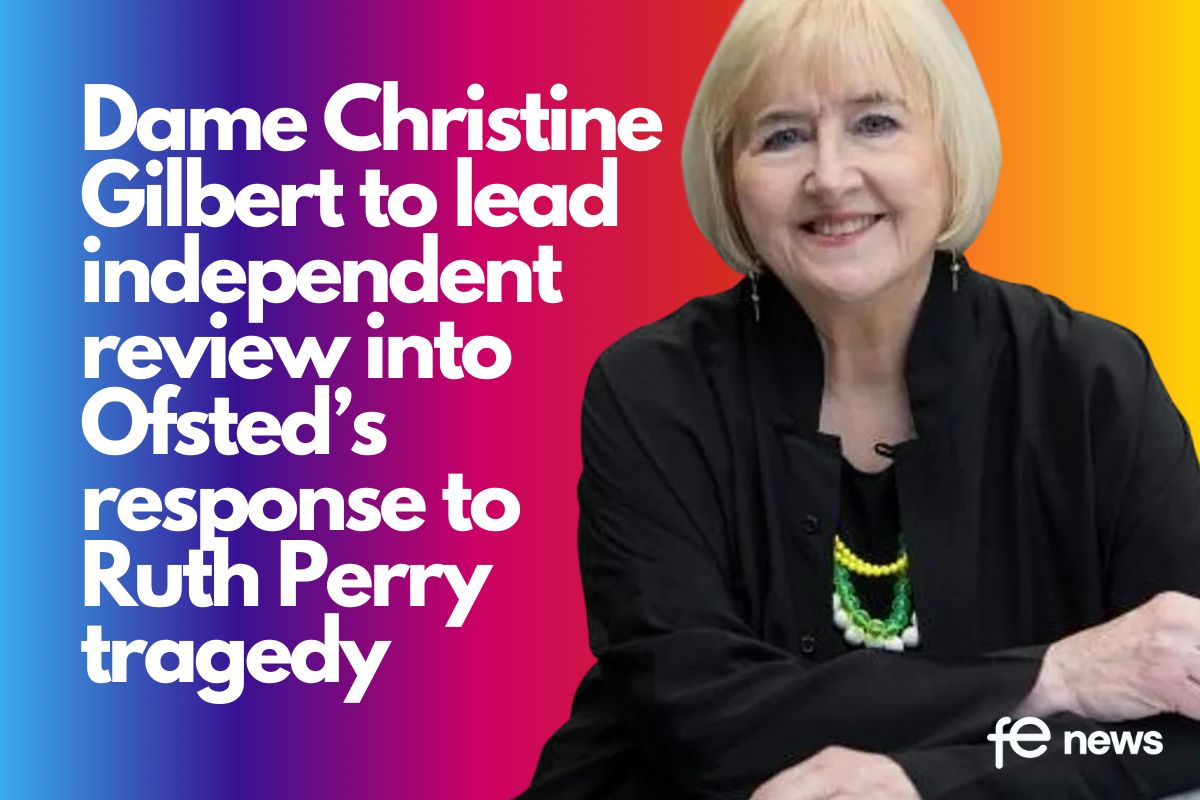Good Strategy Is Crucial For FE Transformation

Particularly given their challenging operating context, the purpose of a further education college is one of the most powerful tools which leaders can use to drive their transformation.
Just about every further education college has a mission statement. Some talk about being the premier college in the extended local area.
Some talk about the policy imperatives which they exist to advance. Some talk about the customers they serve. It is often the case – in further education and all other sectors – that mission statements exist on websites, in financial statements and, perhaps, a poster behind reception.
They are seen as one of the things that you’re supposed to have – not as one of the most important and powerful tools available to leaders.Often turgid, abstracted and committee-drafted, in trying to say everything they say nothing much at all – and do even less.
Dan Pallotta makes an important distinction between mission statements – the purpose of which is to satisfy communications and public relations ends – and being on a mission, with all of the attendant passion, clarity and urgency:
‘A person or organisation on a mission is inspiring. A mission statement is an abstraction.’
True, truly impactful, mission statements he suggests, ‘yearn. They cry. They’re unequivocal. And they’re the product of the soul – the product for living and building and creating.’
Like Pallotta, I am far more interested in the mission than the mission statement. All further education colleges have in common a profoundly important mission: they help young people and adults to change their lives and those of their families; they help businesses to improve and grow; and through that work, they strengthen the communities in which they work.
You can see and feel it whenever you walk around a college; it gets me every time. That mission to improve the lives of others through education is the thing that unifies everyone who works in a further education college – whether they’re a teacher, work in corporate services or occupy a leadership role.
Particularly, as austerity has whittled away at reward and the resources available to colleagues as they look to deliver in their roles, colleagues’ affinity with the mission of their college has become a more important and isolated reason for their decision to work in a college despite the challenges.
This unifying mission presents an incredible opportunity for the leaders of further education colleges – particularly, but not exclusively, those who need to drive transformational change.
We saw in Chapter 4 that Barber, the IPA and McKinsey all talked about the importance of a clear, communicable vision for the future; without one, transformations risk a lack of focus, direction and efficiency of execution.
Robert Quinn and Anjan Thakor are brilliant and deeply relevant in their thinking on organisational mission – or ‘purpose’ as they call it. They distinguish between organisations which frame their purpose in cold, economic and commercial terms (e.g. growth or shareholder value) and those which instead define their mission in terms of higher purpose which: ‘reflects something more aspirational.
It explains how people involved in an organisation are making a difference, gives them a sense of meaning, and draws their support.’
They argue that most organisations operate on the assumption that work is fundamentally contractual in nature – with employees acting as independent economic actors looking to maximise their returns whilst minimise their effort and costs.
They see this as a self-fulfilling prophecy which precludes the notion of a fullyengaged workforce – creating a transactional relationship between an organisation and its employees.
In such organisations, managers incentivise employees based on that contractual view and employees respond in kind; managers see that as validation of their assumptions about the employment relationship and so doubledown on the contractual approach.
From their research, though, they saw that organisations which frame an authentic higher purpose can unlock new levels of staff engagement, commitment, innovation – and bottom-line performance: ‘people will try new things, move into deep learning, take risks and make surprising contributions.’
This happens precisely because it goes beyond that contractual view of the employment relationships and creates an intersection between the individual and collective good – which, in turn, facilitates a different set of motivations and behaviour amongst leaders, managers and their employees.
They suggest eight steps that organisations can take to unlock this new energy source:
- Envision an inspired workforce: Expose senior leaders to great examples of wholly engaged and committed employees who obviously go above and beyond because they see a higher purpose in their work.Ask them to envision an organisation in which the majority of employees were so engaged.
- Discover the purpose: Be wary of the platitudinous mission statements which can often emerge from long and analytical pieces of work on purpose.They argue that an organisation’s higher purpose does not need to be invented; rather, it should be discovered through an empathetic process of engagement with staff. Higher purpose should be discovered through a collective, iterative process involving staff at all levels.
- Recognise the need for authenticity: Again, be wary of ‘work on purpose’ undertaken because that’s what organisations are supposed to do. ‘Work on higher purpose’ must be about goals and values that senior leaders will then inject into the veins of the business, starting with their own decisions and conduct. On this Quinn and Thakor say: ‘if your purpose is authentic, people know, because it drives every decision and you do things other companies would not…’They note that an organisation’s true nature is revealed by what its leaders do in the toughest of times.
- Turn the authentic message into a constant message: They note that the task of communicating and clarifying an organisation’s higher purpose is never done; the task is for purpose to ‘sink into the collective conscience’ of the organisation.When this happens colleagues will begin to use the purpose as a filter for decision-making.
- Stimulate individual learning: They argue that by connecting the purpose to the learning processes of the organisation, leaders strengthen both. They reference the military concept of ‘commanders’ intent’ through which soldiers become able to carry on with their mission in the absence of the commander – having internalised the commander’s purpose for the mission.
- Turn mid-level managers into purpose-driven leaders: Organisations need middle-leaders who understand the organisation’s purpose, ‘deeply connect with it and lead with moral power’ – which they note goes way beyond what most organisations expect and get from their middle tiers.
- Connect the people to the purpose: Helping employees connect their day-to-day tasks with the organisation’s higher purpose precisely so that they can begin to engage with those tasks differently, rethink them and perform them to a new standard.
- Unleash the positive energizers: Through every organisation there is a group of change agents – mature, purpose-driven, optimistic and engaged. Organisations must use these change agents to support the development of new initiatives, garner feedback and new ideas from their colleagues which can be used to maintain momentum.
Their simple conclusion on purpose: ‘by tapping into that power you can transform a whole organisation.’
I agree with every word of the above. I’ve included an extended summary of their work because I wish I’d read it in the spring of 2015.
Adopting this approach does create a hostage to fortune for leaders. It posits a north star and sets very clear expectations about the way in which leaders will conduct themselves, take decisions and empower others to do the same.
Len Sherman recognises the disconnects that can often exist between organisations and their mission statements – noting a number of examples of large corporates,such as Wells Fargo, which have fallen foul of the law in ways which awkwardly contradict their stated mission.
He also recognises the disdain that folk working in large organisations can often have for their organisations’ mission statements – assuming they’re even aware of them.
He argues, though, that it is precisely because of these disconnects, and the fast-changing business environment, that organisations need some ‘anchoring ideology’to guide them. ‘When management priorities become strictly driven by short-term business performance considerations, and business transactions are handled on an ad hoc, case-by-case basis, companies often lose their business – and sometimes even their moral – compass.’
Amazon’s success, he suggests, is the result of a clearly articulated corporate purpose and management philosophy that guides decision-making at all levels in an organisation with over 340,000 employees. Amazon’s 14 leadership principles are compelling and widely known; more important, they have been hardwired into the way the organisation works.
In one very important sense, an Ofsted inspection is a great way of establishing whether a given college is delivering against its purpose – because inspections, and discussions with inspectors, always circle back to impact on student experience and outcomes.
It can be spectacularly frustrating to have an inspector bring you back to the student impact of whatever initiative you’ve been trying to persuade them is a great thing – but they’re absolutely right to do it.
That is the purpose of Ofsted and their inspections. I am not arguing here that college purpose and Ofsted rating are perfectly synonymous. They are not; colleges are right to define their purpose in broader terms – going beyond their aim for a positive Ofsted assessment of curriculum quality.
Inspectors’ zealous and relentless focus on student impact does, though, bear comparison with the way in which I believe colleges should position and relentlessly test everything they do against their stated purpose.
Guided by a clear sense of organisational purpose, leaders should devise a genuine, long-term strategy under the banner of which they will deliver their transformation.
Strategy is both incredibly complex and desperately simple. It is the subject of a colossal body of academic work, corporate thoughtleadership, professional advice and discussion among leaders in all sectors. My intention here is not add a new methodology to the global stockpile of the same.
Rather it is to make two points:
- First, that transformation requires strategy; and,
- Second, that the strategy must in fact be a strategy.
One might argue that the transformation of a further education college can be a narrow, focused programme of action designed to address a particular set of issues and requirements for performance improvement.
It is clear from the review of Ofsted reports in Chapter 3 that poorly performing colleges very often share a bundle of the same causal issues, including:
- a failure to make enough progress since the previous inspection;
- a culture of low expectations; poor financial management;
- inaccurate selfassessment and/or a lack of focus on areas for improvement;
- and poor use of data to understand and drive performance.
The FE Commissioner’s annual report confirms the same; in different colleges, he very often makes recommendations pertaining to a common set of causal issues which in turn undermine headline curriculum and financial performance.
Efforts to drive up 16–18 achievement rates and value-added will likely be in vain if the transformation effort doesn’t tackle causal issues as well as the performance symptoms which need to be addressed – whatever they may be in a given organisation.
My conclusion is that the transformation of a college should be presumed to be a whole-organisation, all-in-scope endeavour until its scope can be more tightly defined.
It follows from the power of purpose advocated above that such whole-organisation transformations require leaders to posit a clear, simple, focused strategy to guide the change.
Together with their connection of the organisation to its higher purpose, the strategy that leaders devise should help liberate the organisation to heal itself – where the day-to-day decisions taken by colleagues at all levels, in all parts of the organisation, help to deliver the required improvements.
Having accepted the need to devise a strategy under the banner of which the transformation will be executed, the leader’s challenge is to devise a good strategy.
On this point, I am grateful to Martin Doel for introducing me to the work of Richard Rumelt. Rumelt distinguishes between good and bad strategy – and helpfully characterises both.
He notes that: “Too many organisational leaders say they have a strategy when they do not. Instead they espouse what I call ‘bad strategy’. Bad strategy ignores the power of choice and focus, trying instead to accommodate a multitude of conflicting demands and interests… Bad strategy covers up its failure to guide by embracing the language of broad goals, ambition, vision and values.”
He identifies four hallmarks of bad strategy:
- Failure to face the problem: Rumelt argues that a strategy is a way to face and overcome a difficulty – and that a challenge must be clearly defined, or else the quality of the strategy cannot reasonably be assessed.Without identifying and analysing obstacles, you don’t have a strategy at all, he suggests.
- Mistaking goals for strategy: He argues that many organisations mistake the articulation and pursuit of a strategic goal for a strategy – without identifying the organisational strengths or market changes which they will leverage in pursuit of that goal. ‘The job of the leader … is also to create the conditions that will make the push effective,’ he notes.
- Bad strategic objectives: He warns against‘fuzzy strategic objectives’ which can appear as a long list of things to be done which have often emerged from senior leaders’ planning sessions with the label ‘long-term’ added to an otherwise incoherent mix. He also warns against‘blue-sky’ objectives which simply restate the desired future state of affairs, skipping over ‘the annoying fact that no one has a clue how to get there.’
- Fluff: the final hallmark of bad strategy, he suggests, is‘fluff’ i.e. ‘superficial abstraction designed to mask the absence of thought … A restatement of the obvious, combined with a generous sprinkling of buzzwords that masquerade as expertise.’
There are some fairly clear resonances between the above checklist and the set of common causal issues identified through my review of Ofsted reports. Rumelt argues that strategy is about focus and, therefore, choice, i.e.‘setting aside some goals in favour of others’. He considers that, ‘when this hard work is not done, weak strategy is the result’.
Good strategy reflects a basic underlying structure:
- A diagnosis: Which explains the nature of the challenge – simplifying the complexity of reality by identifying the critical aspects of the situation.
- A guiding policy: An overall approach chosen to cope with or overcome the obstacles identified in the diagnosis.
- Coherent actions: A coordinated set of steps which, taken together, support the accomplishment of the guiding policy.
The diagnosis stage is critical in my and others’ experience. That auditing, listening and analysing phase should enable leaders to distil a clear sense of what’s really going on – and what’s really going wrong – in the organisation.
The leader’s skill here is to distinguish cause from symptom – focusing on the real, root issues undermining organisational wellbeing and performance. It is, therefore, as important to test the emerging diagnosis as it was to look and listen in the first instance.
The ‘guiding policy’should directly address the diagnosis, be consistent with the organisation’s purpose and values (see below) – and should provide colleagues with a clear sense of how the challenge will be addressed.
The ‘coherent actions’ are where strategy and transformation intersect.We saw in Chapter 4 that Barber, the IPA and McKinsey all placed great emphasis on the existence of a clear, detailed and communicable roadmap for the transformation.
Determining and framing concrete, transformational actions in the context of the organisation’s purpose, problems and a clear approach is how leaders create for themselves the opportunity to generate understanding, engagement and enthusiasm for the change.
Leaders’ first task in any strategy or transformation effort is to thoroughly investigate and develop a nuanced understanding of the baseline position.
I am used to arriving new to an organisation on a pre-determined transformation mission – as was the case when I was charged with transforming Capita’s own apprenticeship programme into a large, customer-facing business – or arriving new to an organisation and finding that transformation is needed – as was the case when I took up post at North Hertfordshire College.
Others may already be in post when the need for transformation is sparked. Whatever the circumstances in which leader and transformation come together, the first, and in some ways most important, task of the whole transformation is to establish the baseline.
Further education colleges are incredibly complex, multi-dimensional organisations, working in a challenging and often unstable operating environment (see Chapter 1). Before they begin to devise their prescription, leaders must first establish a thorough, nuanced diagnosis.
That diagnosis will likely start with the headlines which prompted the transformation in the first place – whether an unfavourable Ofsted inspection, financial event, intervention from the FE Commissioner or, simply, a slide in performance which leaders and governors wish to stem.
That headline must be seen as the beginning of the baselining exercise, not the end. The broader and deeper the baselining exercise the better.
As a minimum, it should include:
- Analysis of curriculum performance data: A thorough interrogation of curriculum performance data, identifying issues and trends at a granular level – and reaching for insight as to root causes of performance issues that will need to be addressed through the transformation.
- Analysis of financial performance data: A similarly robust and comprehensive review of financial performance data – and a detailed review of the balance sheet, fixed-asset register, extant commercial contracts and other finance tools so that issues can be flushed out early – and so that a picture can be established of the resources that can be made available to drive the transformation.
- Review of regulatory and contractual compliance: A review of regulatory and contractual compliance across the organisation including a detailed review of corporate policy and practice relating to all regulated aspects of the organisation’s operation. This level of detail may feel excessive but, particularly for an incoming leader, it is far better to gain comfort on these fundamentals early.
- Staff engagement and feedback: An extended programme of listening to colleagues at all levels of the organisation on whichever matters they wish to raise with the leader. Open, authentic and informal engagement from leaders (see Chapter 7) will elicit more candid and insightful input from colleagues than would be the case through formal mechanisms alone. This is also a great moment to conduct a baselining staff survey – in which colleagues are assured of their anonymity and encouraged not to hold back in their feedback.
- Stakeholder engagement and feedback: A similar external consultation exercise through which leaders glean a sense of the stakeholder relationships, partnerships and support that exists with local, regional and national organisations. Both of these listening exercises should help the leader build a sense of the organisation’s history, culture, open wounds and unique strengths.
- Curriculum quality review: Some sort of curriculum quality review process. I personally favour a series of mock inspections, phased over a couple of months, through which a thorough understanding of the strengths and areas for improvement in each curriculum area is established.
That these reviews are conducted in a sensitive and supportive manner is crucial. They must be positioned and conducted as a supportive means through which future improvement actions will be established – not as an exercise in performance appraisal or the judgement of colleagues’ competence.
Only when they have completed the above baselining exercise, reflected on and synthesised their findings into a coherent diagnosis are leaders in a position to devise a way forward: a ‘guiding policy’ and set of‘coherent actions’ in Rumelt’s language; a strategy and transformation plan in mine.
This sort of exercise might usefully be positioned as a classic ‘first 100 days’ exercise by leaders new to their organisation. Such an approach makes it clear to colleagues that leaders are in listening mode, are interested in and open to colleagues’ input – and that they do not intend to make major changes before they properly understand the organisation.
I spoke to several CEOs who, like me, have experience of taking up post in a college which is in obvious need of transformation. All talked about the importance of this baselining exercise; understanding the breadth, depth,substance and nuance of the challenge.
Particularly those who had taken up post in seriously troubled organisations wish that they had invested more time in a more structured and formal baselining exercise at the outset.
They talked about skeletons falling out of cupboards months into their time in post which, in hindsight, they could have done to know about much sooner. I found it incredibly easy to empathise.
They talked about two reasons for not investing in the sort of structured exercise suggested above:
- First, they talked about the crisis-management effort which consumed them on taking up post: understanding the substance of the screaming issues they inherited,sharing news with their board, making changes in the senior team, talking to staff about the situation in the hope of maintaining some stability, dealing with the FE Commissioner and ESFA, negotiating with lenders, etc, etc. Managing the crisis can be so consuming that devising and commencing the transformation s forced into the back seat. Indeed, there is a risk that it is not possible to stem the blood flow and begin the life-saving surgery that is required.
- Second, they talked about an assumption that because they could see so many big issues so clearly that they – in hindsight mistakenly – thought they’d established the full baseline. As those skeletons continued to fall out of cupboards, they realised that the baseline was broader, deeper – and worse – than they originally understood.
All wish that they had invested more in the sort of structured baselining exercise described above – for their own sanity as much as to form a platform for transformation.
Matt Hamnett, Director, MH+A
Over the next few weeks FE News will be publishing this research in full, and FETL will be hosting a webinar with Matt on the report later in February.
Chapter One: The further education operating context is incredibly tough / The introduction of T levels
Chapter Two: College performance compared to other sectors
Chapter Three: The 5 causes of poor performance in FE
Chapter Four: Seven lenses of transformation for FE / FE Can Learn From The Success Of Other Sectors
Chapter Five: Good Strategy Is Crucial For FE Transformation / Policy Cycle Blights FE: Colleges Leaders Should Chart Their Own Course
Chapter Six: How to unleash the talent already in your college / Aligning organisational purpose, strategy and transformation priorities with available funding
Chapter Seven: Leading the transformation in FE












Responses